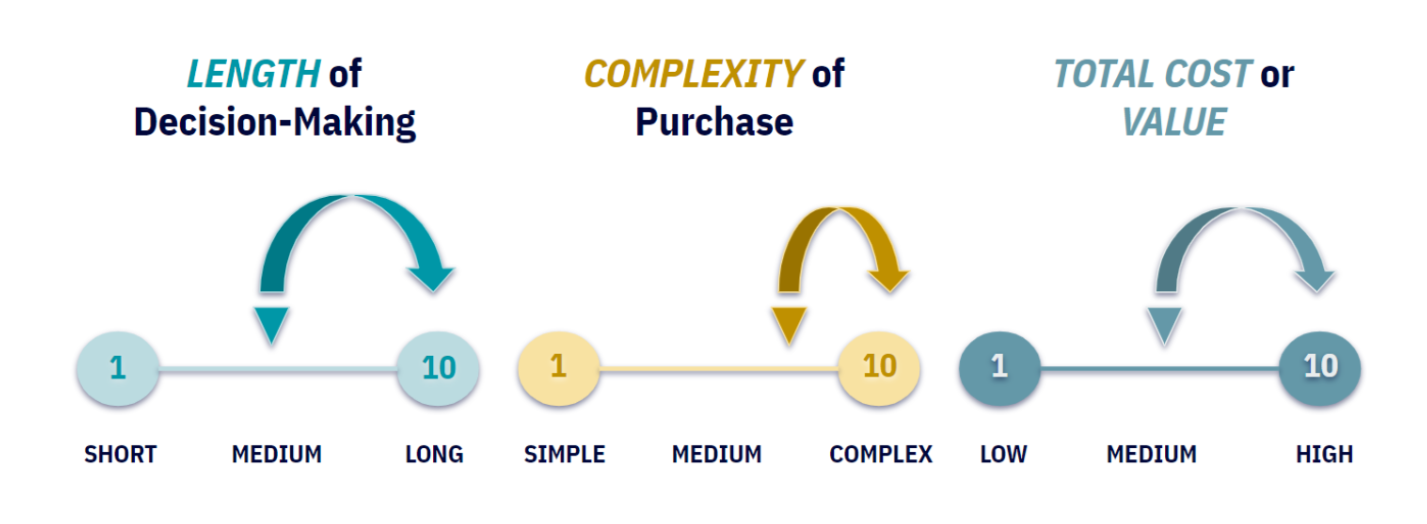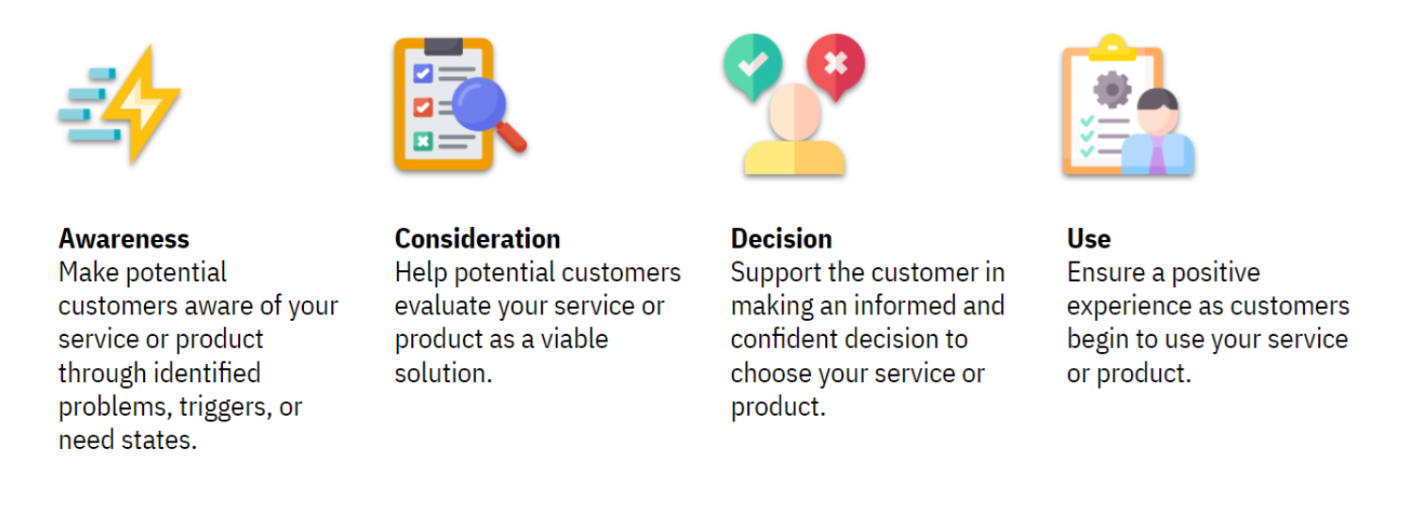The concept of an SEO customer journey is essential for businesses aiming to connect effectively with their audience through Google. By understanding and mapping this journey, businesses can enhance visibility, engagement, and conversions at every stage of the customer’s decision-making process.
This guide provides a comprehensive strategy for mapping and optimizing the SEO customer journey. Following the steps outlined will help create a seamless and effective pathway that guides potential customers from initial awareness to loyal use of your products or services.
Understanding the Customer Journey
The SEO customer journey refers to a customer's stages, from discovering your brand via search engines to becoming a loyal user. It involves leveraging SEO strategies to ensure your content aligns with the customer's needs at each stage. The importance of the SEO customer journey in digital marketing cannot be overstated. It helps businesses align their SEO strategies with customer behavior. By optimizing content for each journey stage, businesses can improve their search engine rankings, increase traffic, and enhance user engagement and satisfaction.
A recent study by Rand Fishkin in collaboration with Datos highlights the growing significance of zero-click searches. According to the 2024 Zero-Click Search Study, only 1% of all clicks from Google searches in the United States go to paid search ads. This figure accounts for the billions of Google searches without paid ads. When paid ads do appear, the average click-through rate (CTR) is estimated to be between 5-10%. This underscores the importance of SEO for organic discovery and the customer journey mindset, which benefits organic traffic and enhances the performance of paid campaigns by driving more informed and engaged users to the ads.
Who is the SEO Customer Journey For?
This process and framework are not designed for brands looking to sell low-consideration items, such as chewing gum at checkout. Instead, it is tailored for products or services that meet at least two of the following three criteria:
- Length of Decision-Making: Medium to Long
- Complexity of Purchase: High to Very Complex
- Total Cost or Value: Medium to High for both the customer and the business

By focusing on these criteria, the SEO customer journey framework ensures businesses can effectively guide potential customers through a more intricate decision-making process, ultimately leading to higher engagement and conversion rates.
Key Stages of the SEO Customer Journey
- Awareness
- Consideration
- Decision
- Use

An Important Note About Content and Keywords
Creating a framework to reach your specific customers requires critical thinking and the ability to:
- Define clear user needs to inform your research.
- Identify keywords related to your industry's common problems, triggers, or needs.
- Develop blog posts, articles, landing pages, and/or resources that provide solutions and insights into these problems.
- Ensure your content uses the identified keywords appropriately.
Awareness: Creating Visibility Early in the Journey
To make potential customers aware of your products or services through SEO, you need to take action:
- Create high-quality, informative content that addresses common problems or needs your target audience searches for.
- Optimize page titles, meta descriptions, and headers with relevant keywords to catch users’ and Google’s attention.
- Share your content on social media platforms to increase its reach and visibility.
- Perform outreach and digital PR campaigns to attract more attention to your content and acquire backlinks from reputable sites, boosting your site's authority and search engine ranking.
Awareness Use Case: Banking
User Need: Dissatisfaction with current bank accounts due to high fees and poor service.
Search Behavior: Potential customers search for terms like “how to switch banks” and “new checking account.” Let’s look at sample keywords to see what you might have to bid to capture traffic in paid search:
- “new checking account” has 590 monthly searches in the U.S. with a cost-per-click (CPC) range of $9.64 - $36.83.
- “how to switch banks” has 4,400 monthly searches and a CPC range of $6.43 - $15.55.
- “switch banks” has 1,000 monthly searches and a CPC range of $3.80 - $13.93.
Brand Action: Create pages addressing the benefits of switching banks and optimize your Google Business Profiles to include checking accounts. Promote any ongoing promotions or incentives for new accounts.
A July 2024 Google search on “how to switch banks” reveals that several banks are able to rank in the Top 10, with one in the Top 3, because they have content on a page (and referenced across their site) on how to switch banks with them. Assuming a 5% Click Through Rate (CTR), a bank or credit union could easily expect to spend $3,500 monthly on the three keywords above. Doing competitive research and building your own page is well worth the effort.
Consideration: Evaluating Options
Helping potential customers consider your products or services as viable solutions involves the following key actions:
- Provide comprehensive information about your products or services. Include specifications, features, benefits, and use cases to help potential customers understand exactly what they’re getting.
- Offer guides that compare your offerings with competitors'. Highlight unique selling points and advantages to help customers understand why they should choose your product over others.
- Display customer testimonials and reviews to build trust. Authentic feedback from other users can significantly influence the decision-making process.
Consideration Use Case: Banking
- User Need: Potential customers in the banking industry often seek better options because they are dissatisfied with their current bank accounts, whether due to high fees, poor customer service, or a lack of features. They also look for the best deals and promotions available.
- Search Behavior: Potential customers typically search for terms such as:
-
-
- “checking account bonus” with 22,200 monthly searches.
- “best checking accounts” with 18,100 monthly searches.
- “checking account promotions” with 5,400 monthly searches.
-
- Brand Actions:
-
- Create and optimize a dedicated promotions page for checking accounts. This page should include detailed information about ongoing deals and promotions.
- Post and promote updates related to promotions and customer success stories on your Google Business Profile to enhance local SEO.
- Work with affiliates to promote your checking accounts, leveraging their platforms to reach a wider audience.
A July 2024 search for “checking account bonus” shows two banks ranking in the Top 5 along with the usual suspects of Bankrate and NerdWallet. Why? Because they have a dedicated page for it.
Decision: Making the Final Choice
Helping potential customers decide to switch to your products or services involves providing them with the necessary information and support to feel confident in their choices. This stage is critical as it directly influences the conversion from consideration to action.
- Ensure that your online sign-up process is straightforward, user-friendly, and quick. Provide clear, step-by-step directions to guide customers through the application.
- Offer live chat support to assist potential customers with any questions or concerns during the decision-making process. This real-time assistance can significantly boost their confidence in choosing your service.
- Display social proof such as customer testimonials, case studies, and any awards or recognitions your bank has received. This helps build trust and reassures customers of the quality and reliability of your services
Decision Use Case: Banking
User Need: Potential customers need to make an informed decision to switch, ensuring they choose the best option available for their needs.
Search Behavior: Potential customers typically search for terms such as:
- “open checking account online” with 9,900 monthly searches
- “[bank name] open checking account” with 1,000 monthly searches
- “open credit union account online” with 720 monthly searches
- “easy open bank accounts” with 590 monthly searches
Brand Actions:
- Develop a dedicated page for online account opening, ensuring it is optimized for both desktop and mobile users. Include a simple form with clear instructions.
- Implement a live chat feature on the account opening page, staffed with knowledgeable representatives who can answer questions and provide assistance in real-time.
- Highlight customer reviews, success stories, and any industry awards on the account opening page. For example, if your bank was rated "Best Online Bank" by a reputable source, make sure this accolade is prominently displayed.
- Use visual aids like videos or infographics to walk customers through the online account opening process. Clear, concise instructions can alleviate any confusion and make the process smoother
Use: Ensuring a Positive Experience
Helping customers have a positive experience with your products or services after purchase is important for fostering loyalty and encouraging repeat business. This stage is vital as it directly influences customer satisfaction and retention.
- Provide guides and tutorials to help customers get started with your product. This can include step-by-step instructions, videos, and infographics.
- Offer accessible and responsive customer support. Ensure customers can easily reach you through multiple channels, such as phone, email, and live chat.
- Encourage customers to provide feedback and reviews. Use this feedback to improve your products and services continually.
Use Case: Banking
- Develop comprehensive onboarding guides and tutorials for new customers. For example, create a video series that walks new account holders through the features of their new checking account, how to set up online banking, and tips for managing their finances.
- Ensure your customer support is accessible and responsive. Offer multiple channels for support, including phone, email, and live chat. Provide a dedicated support page with contact information and FAQs.
- Set up automated emails that request feedback after significant interactions, such as account setup or the first transaction. Use surveys and feedback forms to gather customer insights and improve your services.
Conclusion
Understanding and optimizing the SEO customer journey is essential for businesses looking to connect effectively with their audience through Google. By mapping each stage of the customer journey—from awareness to consideration, decision, and use—you can tailor your SEO strategies to meet the specific needs of your potential customers at every step.
This comprehensive approach ensures that you attract and engage users and convert them into loyal customers. By focusing on high-quality content, targeted keywords, and user-centric strategies, you can improve your search engine rankings, increase traffic, and enhance overall user satisfaction.
Implementing the strategies outlined in this guide will help you create a seamless and effective pathway for your customers, leading to higher engagement and conversion rates. Remember, the key to a successful SEO customer journey is continuous optimization and a deep understanding of your customers' needs and behaviors.
As you move forward, remember that SEO is not a one-time effort but an ongoing process that requires regular updates and adjustments. Stay informed about the latest trends and changes in the SEO landscape, and always be ready to adapt your strategies to meet your audience's evolving demands.
By committing to a strategic and customer-focused SEO approach, you can build stronger connections with your audience, drive meaningful engagement, and achieve lasting success in the digital marketplace.
Ready to take your SEO customer journey to the next level? Contact us, and let Acadia help you optimize your strategy for success.

